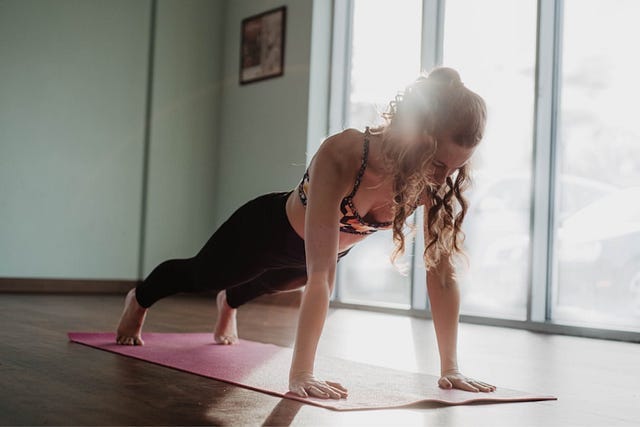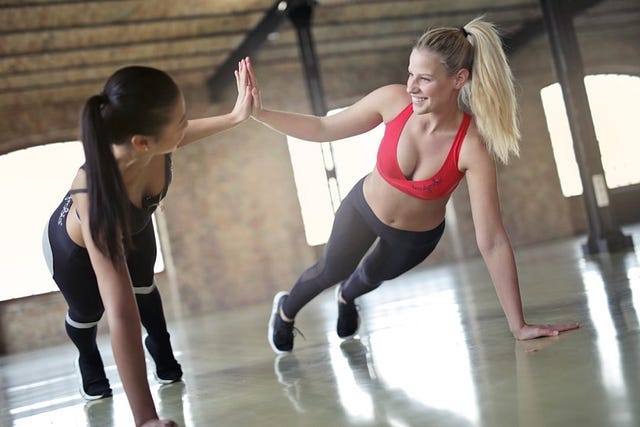
At first glance, holding a plank for two minutes may not seem like much, but not many can sustain even a 1-minute plank, especially if they have poor core strength.
According to Dr. Stuart McGill (a spine biomechanics professor), a 2-minute plank is ideal for building core strength and preventing back pain. When done correctly, the plank is a total-body move that packs a punch, especially for your core, posture, and stability.
Here are some benefits of planking and why you should start today;
1. Better Core Strength
The most obvious benefit of a plank is how it strengthens your core. And no, we’re not just talking about the elusive six-pack. Planks activate deep stabilizing muscles, including:
• Transverse abdominis — the muscle that acts like a natural corset.
• Rectus abdominis — the “six-pack” muscle.
• Obliques — muscles that help with side bending and rotation.
• Erector spinae — muscles along your spine that help maintain posture.
A 2014 study published in the Journal of Strength and Conditioning Research compared various abdominal exercises and found that planks activate more deep core muscles than traditional crunches. That means more bang for your buck with less strain on your neck and spine.
2. Better Posture, Less Pain
Planks strengthen not just your abs but also your shoulders, back, and hips — the muscles that support your natural posture. This improved alignment reduces back and neck pain, especially if you sit for long periods.
A study in Spine journal (2008) found that individuals with chronic low back pain often have poor core stability and benefit from exercises that strengthen these muscle groups. Regular planking can help reverse that trend.
3. Improved Balance and Coordination
You might not be balancing on one foot, but holding a plank is a serious test of body control. Your core, glutes, and shoulders keep you stable and still.
4. Increased Metabolism (Yes, Really)
Planks are an isometric exercise, meaning you’re holding still under tension. That might not sound intense, but your body is working hard to recruit multiple muscle groups simultaneously, which burns calories.
How many calories?
Depending on muscle engagement and intensity, a 155-pound person can burn about 3–4 calories per minute during a standard plank. Add dynamic movements like plank jacks or mountain climbers, and that number jumps significantly.
5. Mental Toughness and Discipline
It’s a mental game. Holding a plank — especially when it gets tough — builds mental endurance and discipline. You’re pushing through discomfort, focusing on your breath, and resisting the urge to drop. Over time, this resilience can spill over into other areas of your life and workouts.

So, Is a 2-Minute Plank Worth It?
Absolutely. When done consistently, holding a plank for just one minute a day can help:
• Strengthen your core
• Improve your posture
• Reduce your risk of back pain
• Boost your balance and stability
• Burn extra calories
• Cultivate mental toughness
Even better? It is low-impact, requires no equipment, and can be done anywhere — bedroom, office, or even beside your bed first thing in the morning.
How to Start?
Start simple: 45 seconds a day, level up to 60 seconds, then 90 seconds, then 120 seconds.
You’ll tremble and shake initially, but when tempted to give up, remember that Josef Šálek from the Czech Republic holds a world record of planking for 9 hours, 38 minutes, and 47 seconds.
We are not trying to beat his record. Just reach an ideal of 2 minutes a day.
When you’re ready to level up, try a plank progression plan or mix in dynamic variations like:
• Plank shoulder taps
• Side planks
• Plank to push-ups
• Plank with leg lifts
These variations fire up your stabilizer muscles even more, translating to better coordination in everyday life.
You don’t need to spend hours at the gym. Spend just 2 minutes a day. Your future self — and your spine — will thank you.
References:
• Ekstrom, R. A., Donatelli, R. A., & Carp, K. C. (2007). Electromyographic analysis of core trunk, hip, and thigh muscles during nine rehabilitation exercises. Journal of Orthopaedic & Sports Physical Therapy.
• Schoenfeld, B. J., et al. (2014). Effects of different abdominal exercises on core activation. Journal of Strength and Conditioning Research.
• Nadler, S. F., Malanga, G. A., DePrince, M., Stitik, T. P., & Feinberg, J. H. (2002). The relationship between lower extremity injury, low back pain, and core strength. Archives of Physical Medicine and Rehabilitation.
Thanks for reading.
Stay hale and hearty — Dr Nguper



